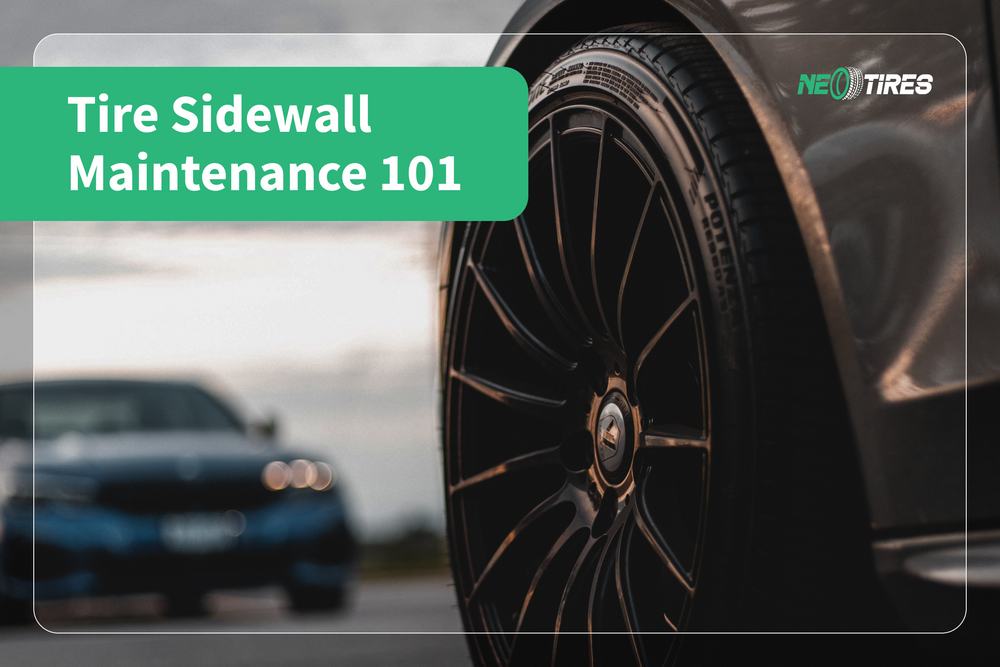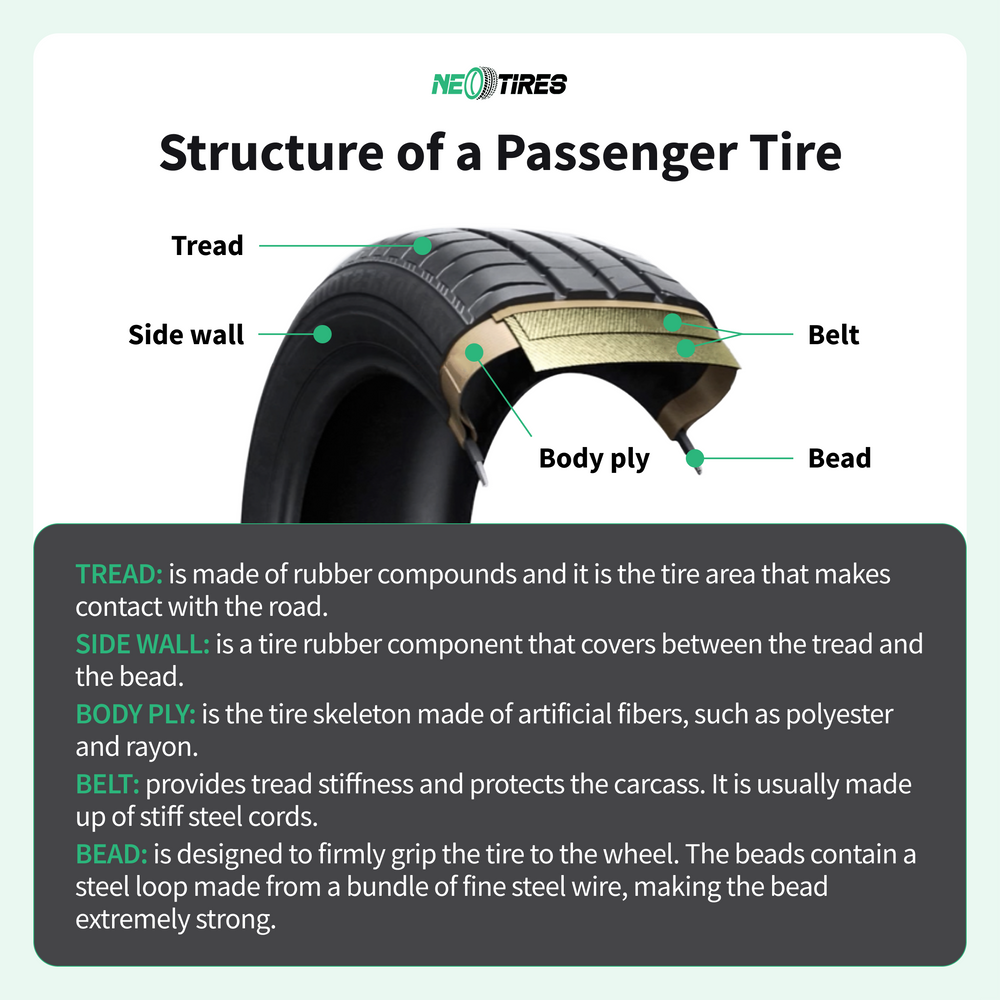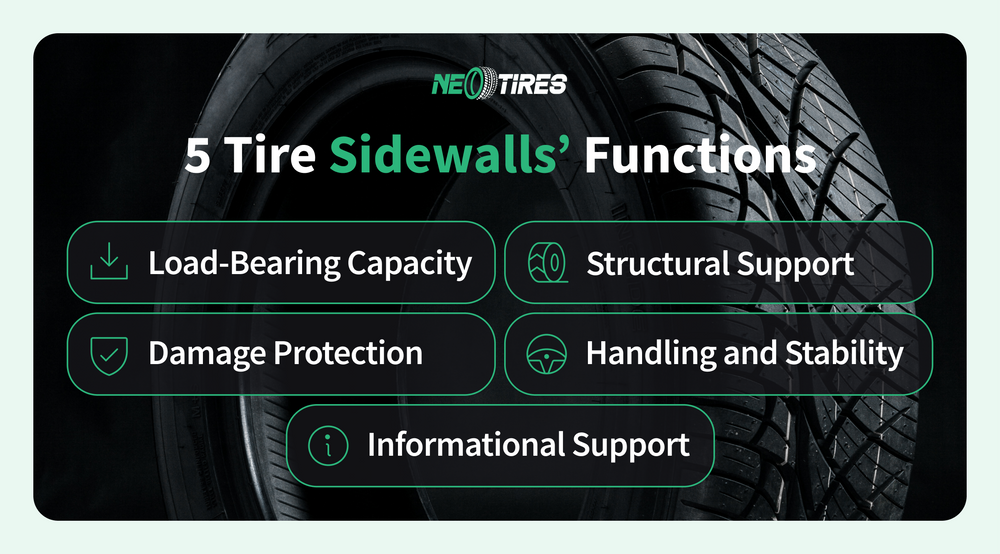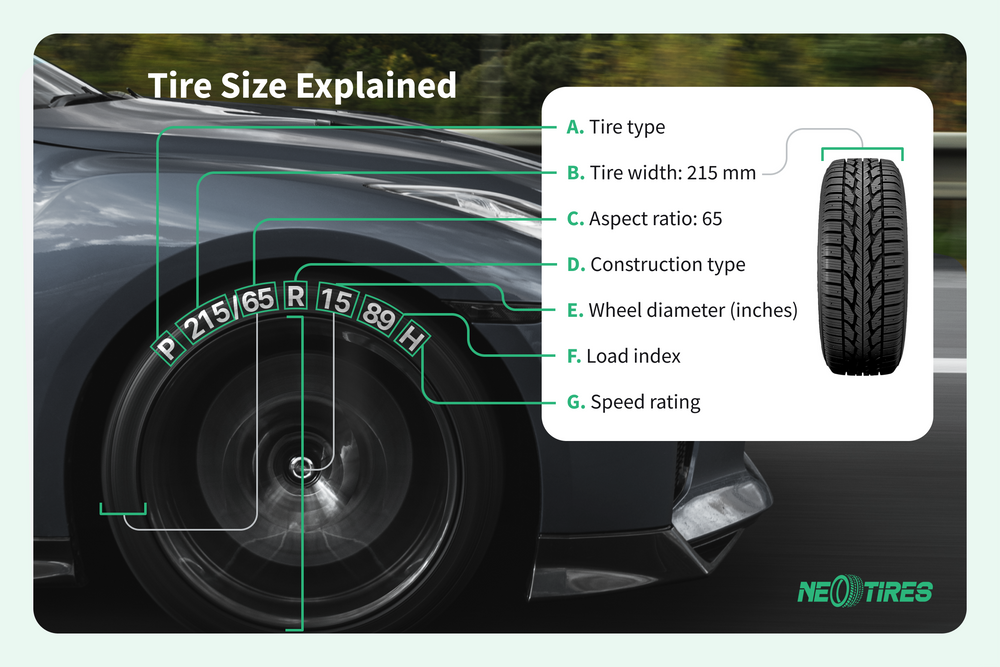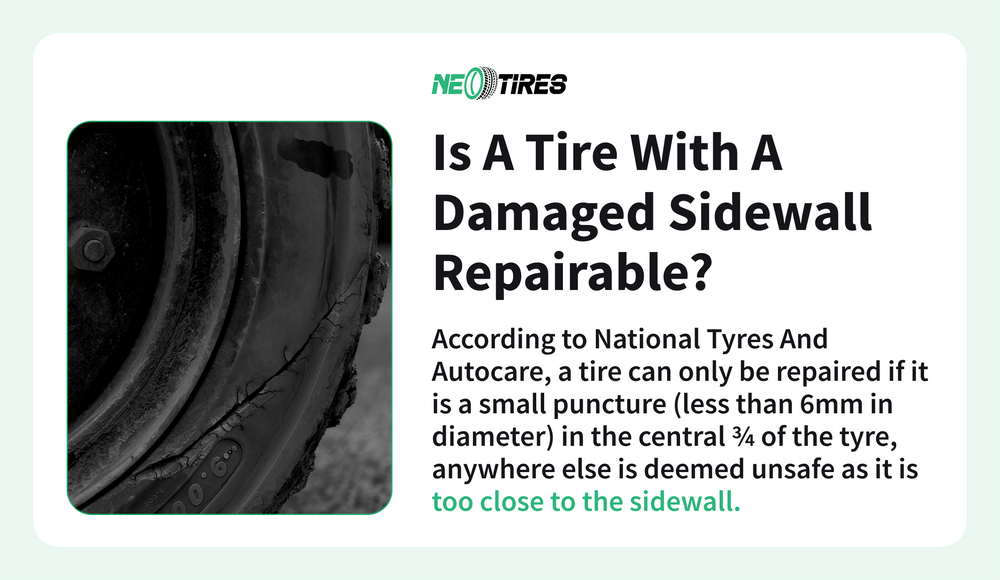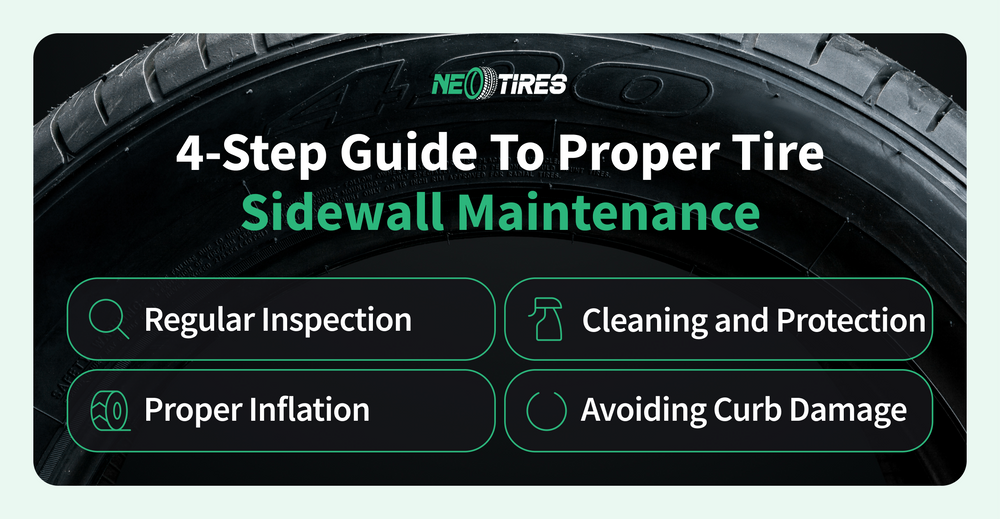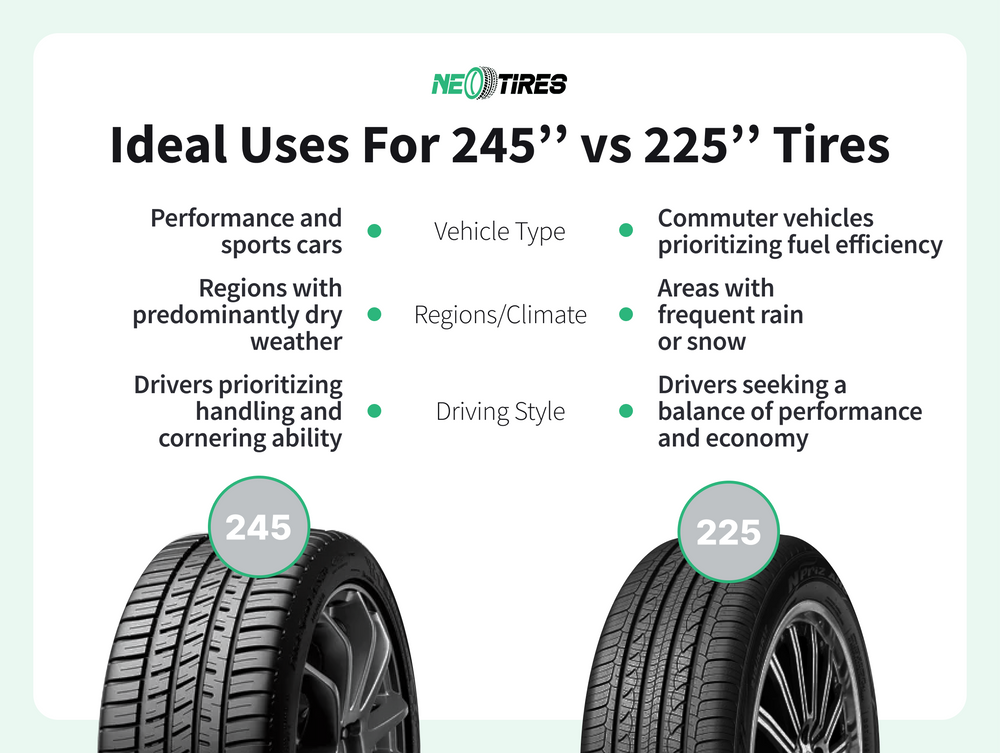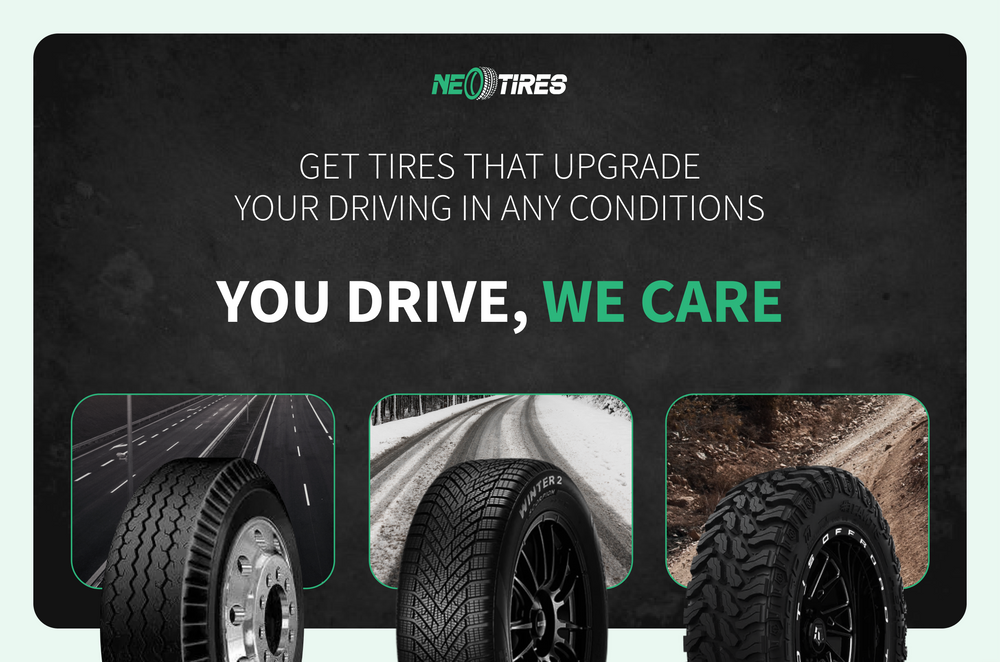Introduction
Each part of a tire plays an important role in the vehicle's overall performance. In this section, we discuss the tire sidewall and its contribution to driving integrity and safety. By "tire sidewall" we mean the vertical area connecting the edge of the tire tread and the rim. This area makes a crucial contribution to vehicle load-bearing and handling, while also protecting tire integrity. This article will help you better understand tire sidewall importance to educate you on how to protect your tires for an optimal driving experience.
1. Anatomy of a Tire Sidewall
The tire's construction is complex as it has to meet the highest performance and safety criteria. The sidewall in particular has several layers of fabric and rubber reinforcements. Each of the layers serves certain purposes, for example:
Moreover, the tire sidewall has a secondary informative role. Manufacturers indicate relevant data on it such as tire size, speed and load ratings, and UTQG which are vital for any driver.
2. The Importance of Tire Sidewalls
2.1 Load-Bearing Capacity
The tire sidewall is the area that takes on a large part of the vehicle's weight. According to NHTSA data, the load-bearing capacity of a tire can increase by up to 10% in the context of proper sidewall and tire maintenance.
2.2 Structural Support
Sidewalls are directly responsible for the structural integrity of the tire. They are crafted in such a way as to withstand well and maintain the shape of the tire in the context of various road surfaces and various pressures during driving.
2.3 Damage Protection
Tire sidewalls absorb many road impacts, thus protecting the tire's internal structure. Manufacturers design them in such a way that they absorb shocks as well as possible to allow for better comfort.
2.4 Handling and Stability
The overall tire stiffness, stability, and cornering properties depend largely on the tire sidewalls. Statistically, the tire sidewall stiffness is likely to influence a car's lap time by up to 2%, as shown in Tire Rack research.
3. Decoding Tire Sidewall Information
Besides its structural importance, the tire sidewall also brings informational relevance. There are at least 4 pieces of crucial information printed on the tire sidewall without which the driver is not able to perceive its specificity and compatibility with his vehicle. Here they are:
3.1 Tire Size and Type
The long sequence on the tire sidewall informs the driver about the type, width, and diameter of the tire. E.g., P215/65R15 - 'P' for passenger vehicle, 215mm width, 65% aspect ratio, 'R' for radial, 15-inch rim diameter.
3.2 Load Index and Speed Rating
These indices are crucial to estimate the speed and cargo capacities that the tire can withstand. Ignoring these indexes can lead to serious performance and safety risks.
3.3 Manufacturing Details
The manufacturers print various specific symbols that would facilitate the driver's perception of the optimal operating conditions of the tire. For example, the 3PMSF symbol suggests that the tire is optimal for extreme winter conditions. The M+S symbol suggests that the tire is mainly viable for moderate weather conditions.
3.4 DOT Code and Tire Age
DOT Code stands for "Department of Transportation Code" and is important to estimate tire age, among others. Products over 6 years old require regular inspection because their integrity becomes too risky, regardless of the tread depth.
4. Common Tire Sidewall Issues
Like any other area of the tire, the sidewall is also subjected to stress factors during rides, which causes a series of issues. Here are 4 of the most common:
4.1 Cuts and Punctures
The integrity of the sidewall can be severely compromised by even the smallest cuts if the issue is not addressed promptly. Punctures also affect the integrity of the sidewall, often making repair impossible.
4.2 Bulges and Bubbles
This type of damage speaks of moderate to severe internal tire damage. Driving with such issues is contraindicated and urgent tire replacement is the safest alternative. According to Consumer Reports statistics, 1 in 10 tire failures occur due to sidewall issues.
4.3 Dry Rot and Cracking
Cracking and dry rot is a typical problem of very old tires. This can appear as a result of natural tire aging, but it can also be caused by improper tire storage and UV exposure.
4.4 Sidewall Wear
While a less common problem, sidewall uneven wear is an indicator of potential suspension issues. Tires may need alignment. Michelin also says that such an issue can be the result of incorrect camber geometry or components' poor conditions. Addressing a specialist is highly recommended in such a scenario.
5. 4-Step Guide To Proper Tire Sidewall Maintenance
The following 4 steps will help you maintain the health and integrity of your tire sidewalls. Check them out:
5.1 Regular Inspection
Check for visible damage at least monthly and before long trips.
Regular tire inspection will help you detect any integrity issues at an early stage. Addressing the issue quickly will help you save money and prevent potential safety risks.
5.2 Cleaning and Protection
Use mild soap and water. Avoid petroleum-based products that can degrade rubber.
Carefully analyze the composition of the substances you use. We recommend using water-based formulas that have minimal impact on the integrity of the sidewalls.
5.3 Proper Inflation
Maintain recommended tire pressure. Under-inflation can cause excessive sidewall flexing and heat buildup.
Both under and overinflation cause a series of adverse reactions. These include but are not limited to less fuel efficiency, uneven tire wear, handling issues, and longer braking distances. Following the manufacturer's pressure indications is the healthiest practice to ensure long tire life and optimal performance.
5.4 Avoiding Curb Damage
Be cautious when parking to prevent scraping sidewalls against curbs.
Aggressive driving puts too much effort into any area of the tire including the sidewalls. During curbs, sidewalls are the most exposed to stress.
6. When to Replace Tires Due to Sidewall Damage
We recommend that you take into account 2 important aspects when thinking about tire replacement. These are Safety Considerations and Legal Requirements. Sidewall damage is not an aspect to be ignored and immediate tire replacement is highly recommended. Here is why:
6.1 Safety Considerations
Driving on a tire with a compromised sidewall is extremely dangerous. Any visible damage exposing internal components speaks of severe internal damage that can endanger life if not addressed immediately.
6.2 Legal Requirements
Depending on the area you live, several jurisdictions have specific laws regarding the minimum tire sidewall condition. The NHTSA encourages US drivers to switch tires whenever visible sidewall damage occurs.
Even in the absence of specific laws, we recommend that you avoid driving on a tire with sidewall damage for safety purposes. Remember that the tires are the only point of contact between the car and the road. Their integrity must be optimal for safe rides.
7. Choosing the Right Tires for Your Vehicle
Tire sidewalls also have a relevant influence on handling and overall performance. You might want to consider the following aspects when choosing new tires:
7.1 Considering Sidewall Height
The tire profile contributes to comfort and handling. According to Car And Driver, a 10% increase in sidewall height is expected to improve ride comfort by about 5%. At the same time, low-profile tires are likely to deliver better handling and grip, especially on dry roads. Balance your priorities well before deciding on your sidewall height. Discover more about 225 vs 245 tire width.
7.2 Balancing Performance and Comfort
Lower sidewall tires provide stiffer rides. Even if comfort might be slightly compromised, these tires are fairly tenacious at high speed, making them a great option for performance seekers. Conversely, higher sidewalls provide more comfort due to their cushioning properties, making them a nice choice for comfort-oriented drivers.
8. Conclusion
To sum up, tire sidewalls are as essential as the tire tread and any other tire area. They play a crucial role in performance and safety. The tire sidewall condition must not be neglected to prevent potential issues and extend tire serviceability. Drivers can expect to extend their tire life by up to 20% with proper tread and sidewall maintenance, as researched by the Rubber Manufacturers Association.
Why Trust Us?
Our content creation policy is based on the pillar of impartiality. This means that the editorial in this blog is not influenced in any way by third parties. All studies, ratings, and educational materials are built based on data-driven sources in an unbiased way, but only strictly oriented to safety and performance.
Our team, whether in sales, customer support, or content, does not favor specific products or brands. Everything presented in this blog is strictly recommended from performance and safety standpoints, validated by organizations with the same impartial purpose as us. These include but are not limited to Consumer Reports, Tire Review Magazine, Tire Rack, and others that have the same goal of providing neutral information to drivers.
NHTSA and the TIA are just a few official sources with which we confirm the veracity of our driving tips and informational support provided in our blog. Learn more about our mission and culture. Drive safe and choose your tires wisely!




